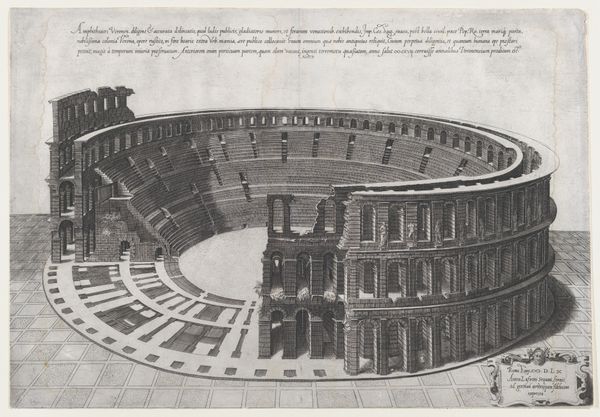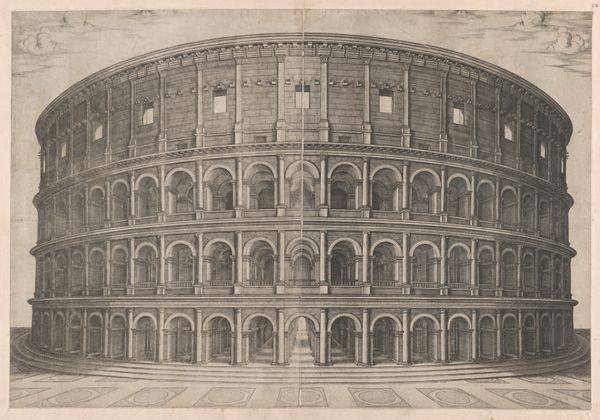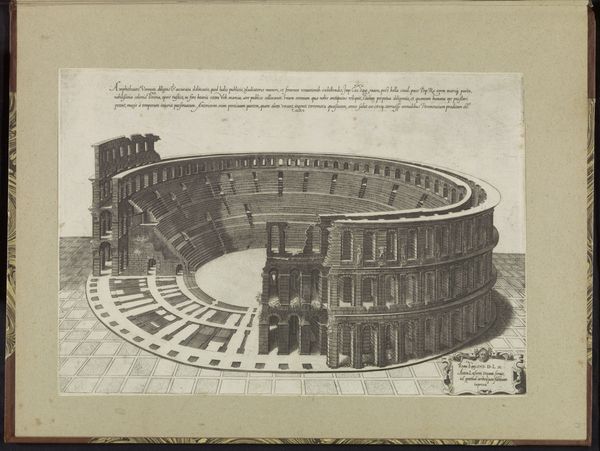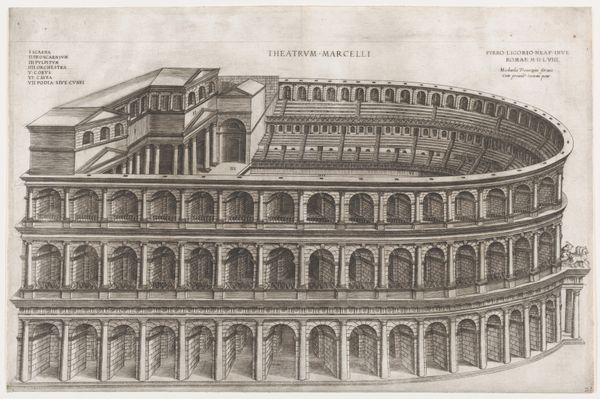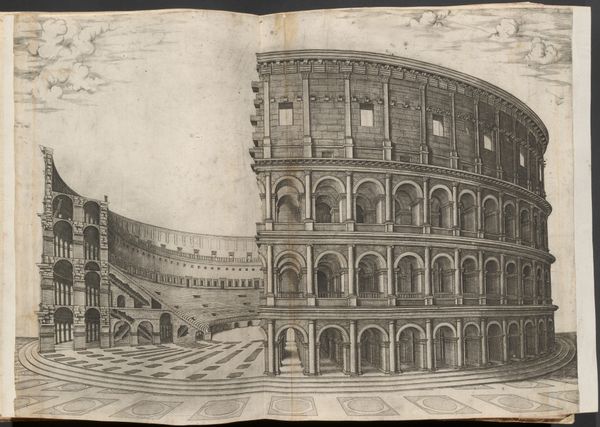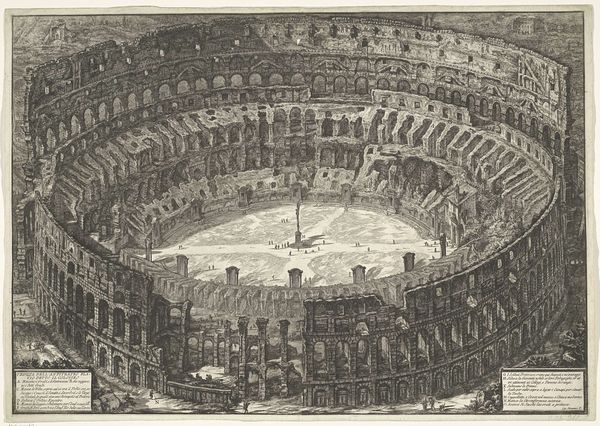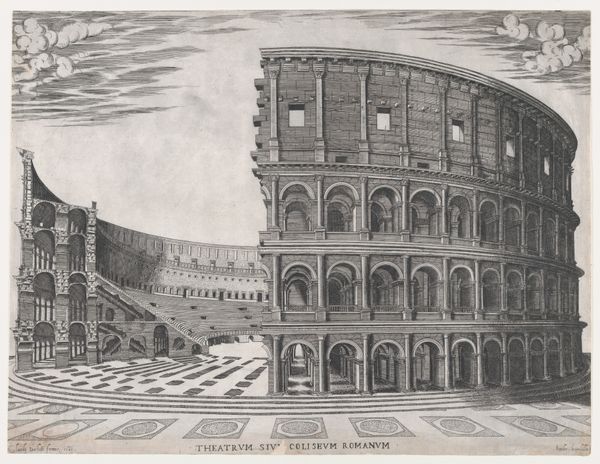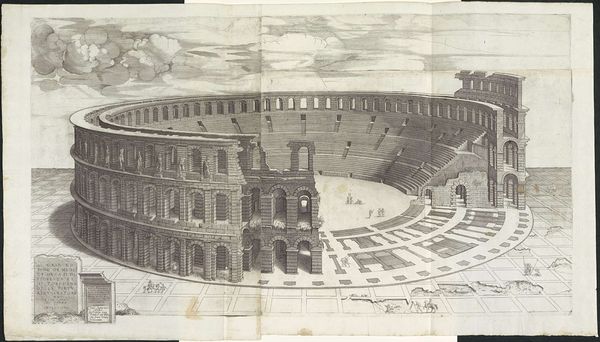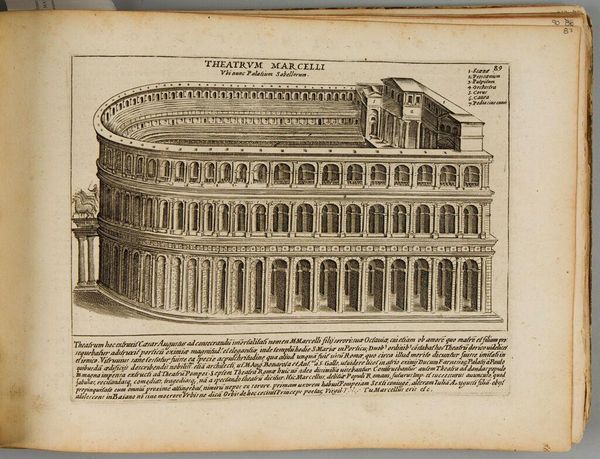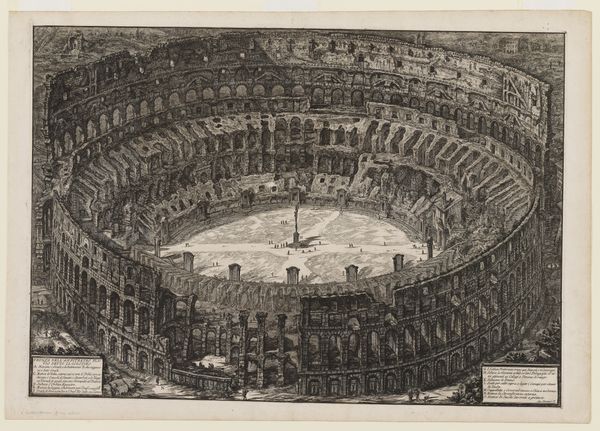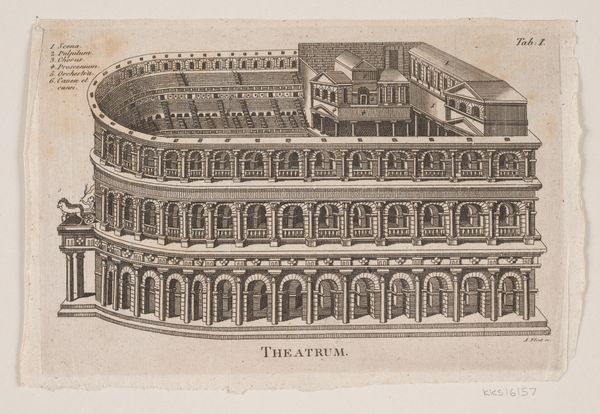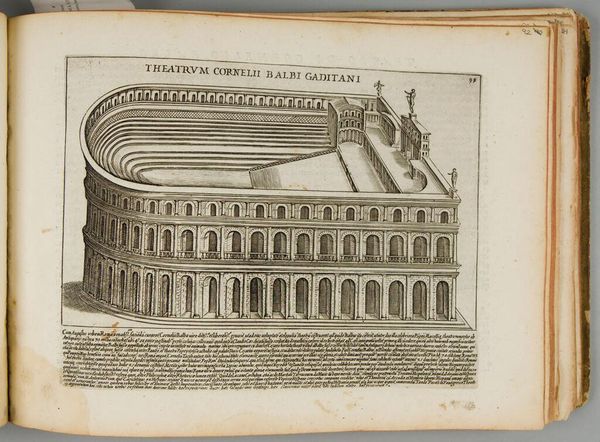
print, engraving, architecture
#
narrative-art
#
baroque
# print
#
old engraving style
#
perspective
#
geometric
#
cityscape
#
history-painting
#
engraving
#
architecture
Dimensions: height 471 mm, width 585 mm
Copyright: Rijks Museum: Open Domain
Curator: The work before us is a 1724 engraving titled "Gezicht op de Arena van Verona." The artist is, unfortunately, anonymous. My first thought is its exquisite balance – a carefully structured interplay of light and shadow. Editor: It strikes me as incomplete. Like an archaeological dig, but in paper and ink, where the missing sections hint at the processes of construction and time’s brutal touch. You know, stone doesn't just disappear, it's taken and used, re-worked. Curator: Indeed. Note the precision of line, the masterful use of perspective. The geometric pattern is repeated vertically with near mechanical regularity, generating that remarkable feeling of depth and monumentality. The artist captures the essence of the amphitheater, presenting not just its likeness but a grand scheme. Editor: But those grand schemes had real consequences. Consider the labor to quarry, transport, and place those stones. This print makes the amphitheater into an abstract form. But how about the underpaid or enslaved folks whose efforts are erased here? It looks nice, but there’s labor hidden under the design. Curator: Yet we shouldn’t discard the technical artistry in creating the engraving. The textures and visual qualities achieved through manipulating the material… the metal plate. It transforms an actual structure into an image with the capacity for broader ideas. Editor: Fair point. Though even those processes – the engraver's studio, the distribution networks for these prints – tell us about a specific time and set of economic relationships. Whose vision does this truly represent, if not also that of those who physically made the piece? Curator: Perhaps it’s about celebrating form – its intricate lines and composition – alongside an acknowledgement of its socio-historical context, offering, finally, an appreciation that synthesizes both vision and execution. Editor: I'll concede that recognizing materiality forces us to reckon with this image not just as an aesthetic artifact, but as the result of so many historical human endeavors, often difficult. A nice etching, yes, but a hard reality in every line, no doubt.
Comments
No comments
Be the first to comment and join the conversation on the ultimate creative platform.
